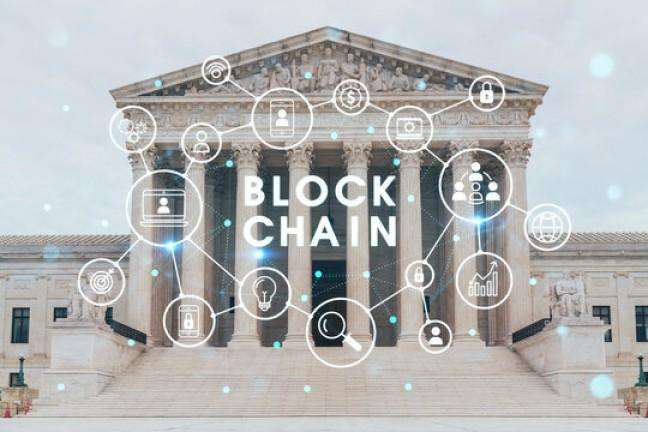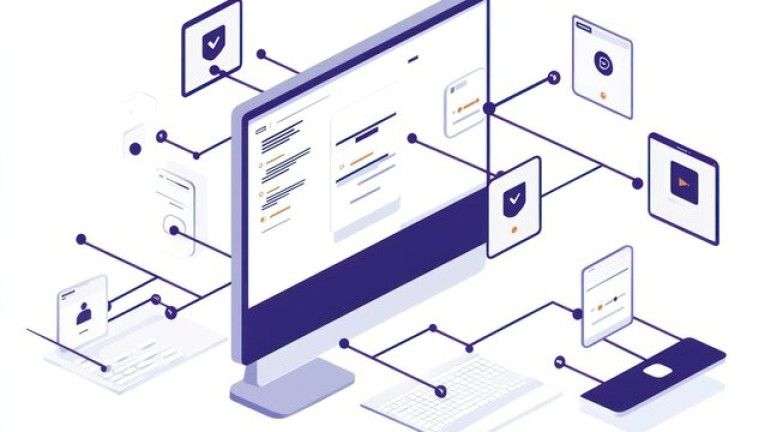Artificial Intelligence (AI) and Blockchain are two technologies that have captured the attention of industries across the world. Both hold transformative potential, each offering a set of unique advantages. When these technologies are combined, they create a powerful synergy that could disrupt existing industries, processes, and business models. In this article, I will explore how AI and Blockchain work together, the benefits of their integration, and the challenges that need to be overcome to fully realize their potential.
Table of Contents
Understanding AI and Blockchain
Before diving into their integration, let’s first define what AI and Blockchain are.
AI (Artificial Intelligence) refers to the ability of a machine or computer system to mimic human cognitive functions, such as learning, reasoning, and problem-solving. It can perform tasks that traditionally required human intelligence, like natural language processing, decision-making, and pattern recognition. AI is implemented through machine learning (ML), neural networks, and deep learning algorithms, which allow computers to analyze data and improve their performance over time.
Blockchain, on the other hand, is a decentralized and distributed ledger technology that securely records transactions across multiple computers. It operates on the principle of transparency, immutability, and trust, as every transaction is recorded in a “block” and linked to previous blocks, forming a “chain.” Blockchain is widely recognized for its role in supporting cryptocurrencies, but its applications extend far beyond digital currencies. It is used in supply chains, financial services, healthcare, and many other sectors for secure data storage, verification, and traceability.
How AI and Blockchain Complement Each Other
Both AI and Blockchain can function independently, but they have complementary strengths that enhance each other when integrated. Here’s a closer look at how these technologies align:
- Data Security and Privacy: AI systems require vast amounts of data to operate effectively. However, privacy and security concerns often arise when this data is centralized or stored in a single location. Blockchain addresses these concerns by offering a decentralized, tamper-resistant system where data can be securely shared across networks. When combined with AI, Blockchain ensures that sensitive data used for training algorithms remains secure, transparent, and auditable.
- Decentralized AI Models: AI models typically require large computational resources and are often deployed in centralized data centers, which can create single points of failure. Blockchain can decentralize these models, enabling AI to be distributed across a network of computers. This ensures that AI applications can run securely and efficiently without relying on a central authority.
- Data Integrity and Transparency: AI models depend on high-quality data. Blockchain ensures that the data used to train AI models is accurate, verified, and transparent. This guarantees that AI decisions are based on trustworthy data and can be audited for fairness and accountability.
- Smart Contracts and Automation: Blockchain’s smart contracts can automate many processes, reducing the need for intermediaries. When paired with AI, smart contracts can become even more powerful, making automated decisions based on real-time data analysis. For example, an AI algorithm could analyze supply chain data and trigger smart contracts to reorder products when inventory levels fall below a certain threshold.
Real-World Applications of AI and Blockchain Integration
The integration of AI and Blockchain is not just a theoretical concept; it is already being applied across various industries. Let me walk you through a few examples to illustrate their combined potential.
- Supply Chain Management: One of the most significant challenges in supply chain management is the lack of transparency and trust between parties. Blockchain ensures that every transaction is recorded and verified in a transparent manner, while AI can predict demand, optimize routes, and improve decision-making. Together, they create a supply chain ecosystem where data is secure, automated, and accurate. For instance, AI can forecast the demand for goods, and Blockchain ensures that the data is traceable and tamper-proof. This combination improves efficiency, reduces fraud, and provides real-time tracking of goods from production to delivery.
- Healthcare: In healthcare, Blockchain is being used to securely store patient records, while AI is used for analyzing medical data and making diagnoses. The integration of these technologies allows for a decentralized healthcare system where patient data is private, secure, and accessible only by authorized parties. AI can analyze patient data from Blockchain records to provide personalized treatment recommendations. This combination enhances healthcare outcomes by ensuring data integrity and providing more accurate predictions and diagnoses.
- Financial Services: Blockchain is already widely used in financial services for transactions, payments, and data verification. When paired with AI, Blockchain can optimize financial processes such as fraud detection, risk management, and trading. AI can analyze transaction patterns in real-time and trigger actions on the Blockchain to prevent fraudulent activities. Additionally, AI can help assess market conditions and execute trades based on algorithmic predictions, while Blockchain ensures that these transactions are secure and transparent.
- Identity Verification: Identity management is an area where both AI and Blockchain can make a significant impact. Blockchain provides a secure, decentralized platform for storing identity data, while AI can analyze biometric data (such as facial recognition or fingerprints) to verify identity. This integration improves the accuracy and security of identity verification processes, reducing the risk of fraud and identity theft.
The Benefits of Integrating AI and Blockchain
The integration of AI and Blockchain brings several advantages:
- Enhanced Security: Blockchain’s cryptographic algorithms ensure that data is secure, while AI helps detect anomalies and potential security threats. This creates a robust defense against cyberattacks and fraud.
- Increased Efficiency: Blockchain automates transactions and reduces the need for intermediaries, while AI optimizes decision-making and predicts outcomes. This leads to faster, more efficient operations across industries.
- Cost Savings: By eliminating intermediaries and automating tasks, both AI and Blockchain can significantly reduce costs. For example, AI-driven automation in supply chains can cut down on inventory costs, while Blockchain can reduce the need for costly verification processes.
- Trust and Transparency: Blockchain’s immutable ledger ensures that all transactions are recorded transparently, while AI can analyze this data for insights. This leads to greater trust and accountability, especially in industries where transparency is critical.
- Scalability: Both AI and Blockchain can scale efficiently. AI models can be trained on large datasets, while Blockchain can handle an increasing number of transactions without compromising security or speed.
Challenges of Integrating AI and Blockchain
While the integration of AI and Blockchain holds immense potential, it is not without its challenges. Some of the key issues include:
- Technical Complexity: Integrating AI and Blockchain requires a deep understanding of both technologies, and there is currently a lack of professionals who possess expertise in both areas. Building a seamless integration platform can be technically challenging.
- Data Privacy: While Blockchain ensures the security of data, the integration of AI may raise concerns about how personal and sensitive data is used. Striking a balance between privacy and the benefits of data sharing will require careful consideration of ethical standards.
- Scalability Issues: While both technologies are scalable, they still face challenges when it comes to handling massive amounts of data and transactions. Blockchain networks, in particular, can experience slow transaction speeds when there is a high volume of activity, and AI models can become computationally expensive as they scale.
- Regulatory Concerns: As with any emerging technology, the regulatory landscape around AI and Blockchain is still evolving. Governments and regulators must find ways to ensure that the integration of these technologies complies with privacy laws, data protection regulations, and other legal frameworks.
Conclusion: The Future of AI and Blockchain Integration
The integration of AI and Blockchain is an exciting development that promises to disrupt industries and create new business opportunities. Together, these technologies can improve efficiency, security, and transparency across sectors, from supply chain management to healthcare and financial services. However, there are still challenges to overcome, particularly around technical complexity, data privacy, and scalability.
Looking ahead, I believe that the potential benefits far outweigh the obstacles. As both technologies continue to mature, the possibilities for their integration will expand, leading to even more innovative solutions. By embracing this disruptive combination, businesses can unlock new efficiencies, gain competitive advantages, and enhance trust with their customers.
The fusion of AI and Blockchain may be in its early stages, but it is clear that this disruptive integration has the potential to reshape the future of technology.





